The Alfie Tych launched on Kickstarter a few weeks ago and has just a few days left. It’s a brand new, extremely compact, half-frame film camera with, I hope, a bright future ahead of it. You can find the Kickstarter here, but if you’d like to know about this eccentric little pocket camera from my perspective, then read on!
Dave Faulkner, the man behind Alfie Cameras, loaned me a prototype to play with for the sake of this preview article on the day the Kickstarter launched. He actually launched the Kickstarter at the photography show at the NEC. It was fully funded in a couple of days and has kept growing at a relatively steady pace since. I’ve been playing with it at a relatively steady pace too. I’d have liked to have shot it more, but unfortunately, I’ve been hampered by a high workload and a bout of covid… Regardless, I have managed to get under the skin of the Alfie Tych, and I’ve found myself impressed.
A Prototype Camera
As I will mention a couple of times throughout this article, the camera I have been playing with is far from the finished article. When Dave gave it me to try, it was very much on the understanding that whilst he was happy for me to write about it, I should make it very clear that the camera is still very much in its testing phase and therefore still has a good few issue that need to be ironed out before production of the camera begins. That is to say that whilst much of what I am about to say will hold true for the final camera, things like light leaks, the autoexposure being out, and the missing lens are very much known bugs. This should therefore only be considered a preview, and not so much a review of the Alfie Tych.
That out of the way, here are my thoughts:
The Impressive Bits
Possibly the most impressive thing about the Tych is the complexity of the thing. This is in no way meant to belittle the efforts of other one-man-band, have-a-go camera manufacturers, but all the ones I can think of have started with something a lot more basic, usually pinhole-based. Dave has skipped the basic 3D printed pinhole camera phase and has gone in knees deep with a camera that whilst being partially 3D printed and has a pinhole option, also has an actual lens (and room for two other optics) on a rotating metal lens barrel.
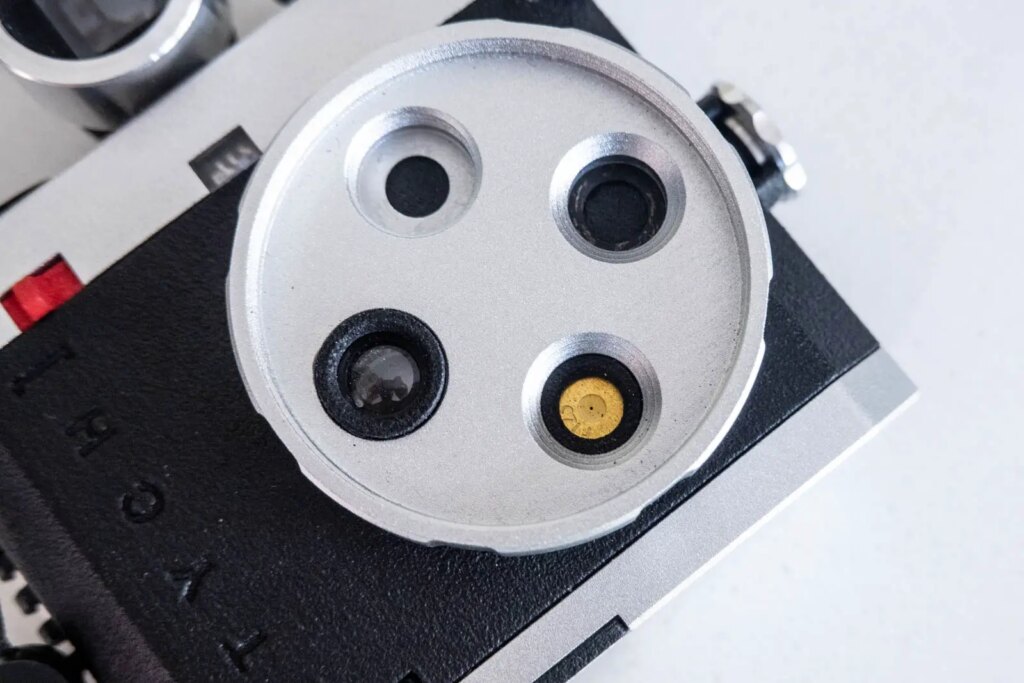
There’s also the machined metal top and bottom plates, a built-in USB rechargeable battery, a digital display on the top and a proper electronically controlled shutter with speeds from 30 seconds up to 1/250th of a second, and a bulb mode. It also has both manual and automatic exposure which is controlled by a built-in light meter, the ability to set the exposure value (ISO) of the film, a digital shot counter, and (though not working on this prototype) a self-timer and even support for a flash via the USB connector. There’s also a shoe mount and a proper optical viewfinder that slots into it and even a 43mm filter thread. In short, this camera is very well advanced for the first camera from a new one-man-band manufacturer.
The Eccentricities
Of course, it still remains the first camera from a new one-man-band manufacturer, and with that, there comes a few, let’s say “eccentric” design choices that appear to have come about through a need to work within some constraints.
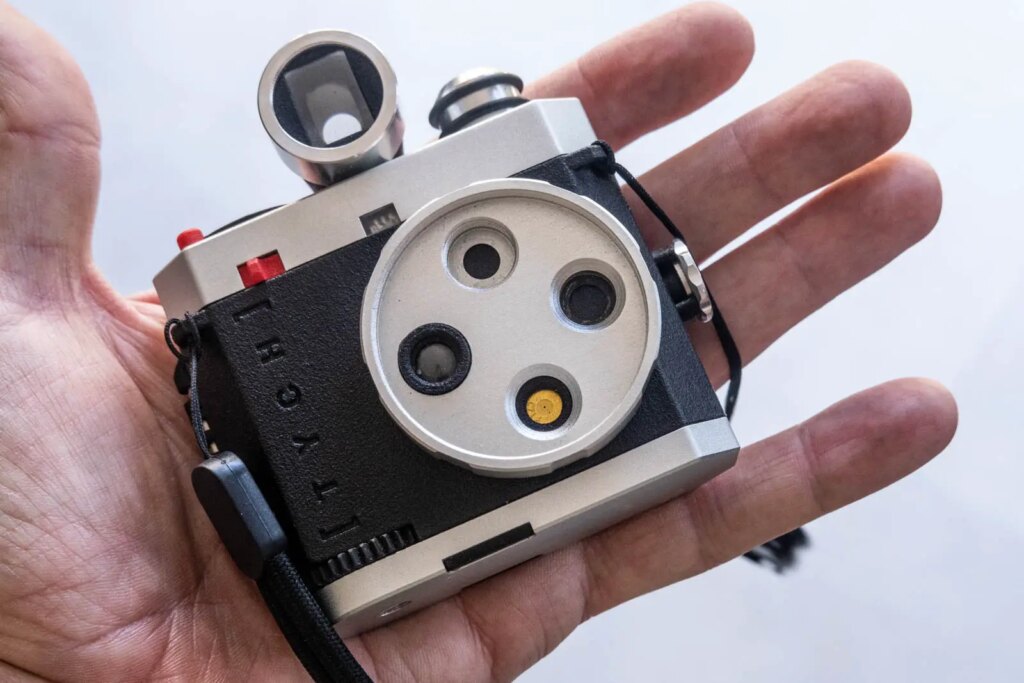
To begin with, the film advance is entirely mechanical and relies on the user watching for a white patch to reappear in a little window on the back of the camera that indicates a complete half frame has been advanced. This mechanism isn’t synced to the digital shot counter either so every time you fire the shutter, the shot counter increases regardless of whether or not you then remember to manually advance the film. If you don’t remember, you’ll get a double/multiple exposure. It’s possible to make an argument that this is a feature rather than a bug as many people like a double exposure, but personally, I think would prefer some sort of feature that prevented accidental multiple exposures but then allowed them at the click of a button. Your mileage may vary.
The 3D-printed nature of a large part of the body points to it being a lower-volume product too. Though, speaking to Dave, he told me he actually prefers the tactile feeling he has designed into the 3D printed material he’s used over injection moulded plastic that would likely come with high volume manufacture. His argument being that to regain a nice tactile finish, he would then need to cover the outside of an injection moulded camera with a leatherette grip which would add assembly time etc. I can see where he’s coming from too, and I agree with his sentiment about the tactile nature of the finish as it currently stands, but there’s just no escaping from the fact that a leatherette grip would ultimately make the camera feel, well, more high-volume, if nothing else.
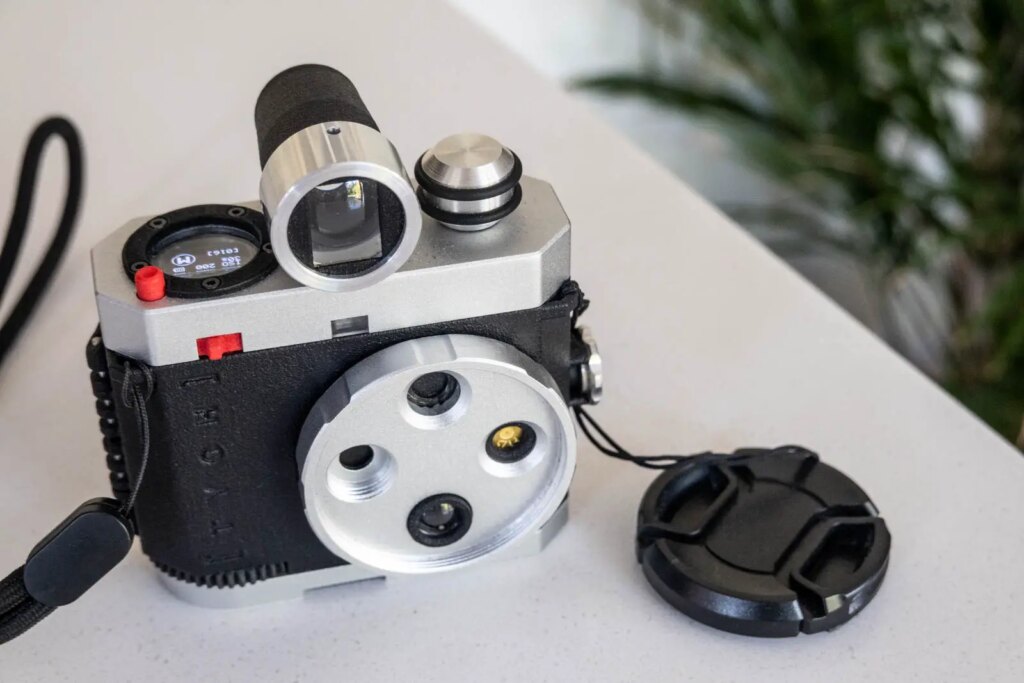
The rotating lens barrel and lens options are a little unconventional too. There’s two versions of the camera on the way to market. The first, the Tych, is a more basic version with a 25mm f/8 lens salvaged from a disposable camera, a f/125 pinhole lens and an f/56 zone sieve. (Yes, I had to look up what the latter meant too – it’s basically a pinhole with a bunch of extra holes around it that makes for a dreamy soft image.) The more advanced camera, the Tych plus, comes with a 4th lens that has yet to be developed. This will also be an f/8 lens, but it will be a 33mm glass lens that will be sharper than the disposable camera lens (more info on this lens below). The Tych will just have an empty space where the 4th lens will go on the Plus model. I actually spoke to Dave very early on about his plans, and these lens options are certainly more than he was expecting to have in his first camera. But, without something faster, focusable, and therefore more versatile, the camera will definitely suffer from the voice of some detractors in the community.
Of course, in reality, the versatility/limitations of the lens options will be something individual users choose to wrestle with. For me, the selling point here is the switchable lenses on the single very small camera. Most specifically, it’s the option to switch between pinhole and an actual optic. I enjoy a bit of pinhole photography, but I currently have two pinhole cameras loaded in my cabinet and just can’t get through the rolls. The option to switch between pinhole and a proper lens on a shot-by-shot basis is therefore really quite appealing to me.
The final obvious design compromise is the Alfie Tych’s nature as a half-frame camera. As I understand it, the reasoning behind starting with a half-frame model over a full-frame model is connected to the availability of shutters. Electronically controllable shutters that cover a half frame are apparently more readily available and more cost-effective. So whilst Dave has plans for a full-frame camera somewhere down the road, half-frame was where he decided to begin. And, let’s face it, in a world where film prices seem to be going up and up, doubling up on the number of frames available from each roll is a pretty good plan…
In use
For all that said, in use, I found myself dismissing any sense of working with something that felt like a compromise and engaging with a camera that instead offers something of a unique user experience. The reality is, it’s a very enjoyable little camera to take photos with. It’s absolutely tiny for a start. Carrying it reminded my of carrying the Pentax 110 auto I have been playing with on and off over the summer. That is to say, it’s very easy to forget it’s even in your pocket.
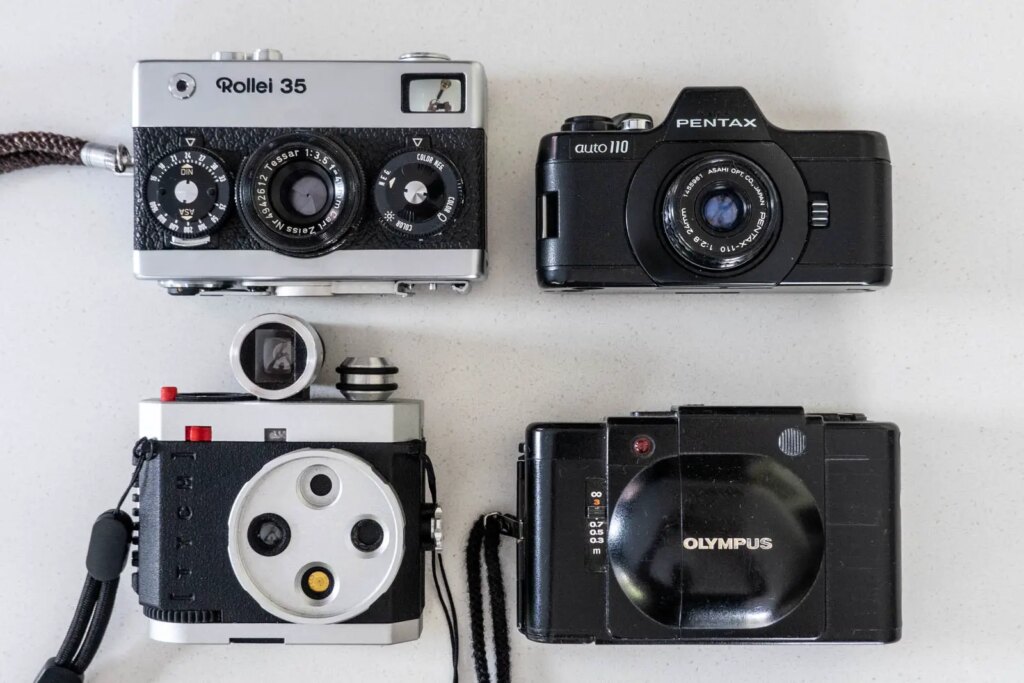
When I first posted pictures of it online, the size did make some folks question the ergonomics. On face value, it certainly looks like it might be awkward to hold such a small camera. In reality though, I’ve not found it to be a problem to hold and shoot with. It’s not as comfortable as some bigger sculpted cameras for sure, but it’s no less comfortable to hold than any other camera of this size in my opinion. It even has a little grip on the back – though it’s so light it doesn’t really need it.
The prototype I have here also comes with the higher quality viewfinder that will come with the Alfie Tych Plus model. It’s quite a large finder for such a small camera, but the quality is great, and actually, since the camera is so small, it can afford to have a larger finder for the benefit of a more enjoyable shooting experience.
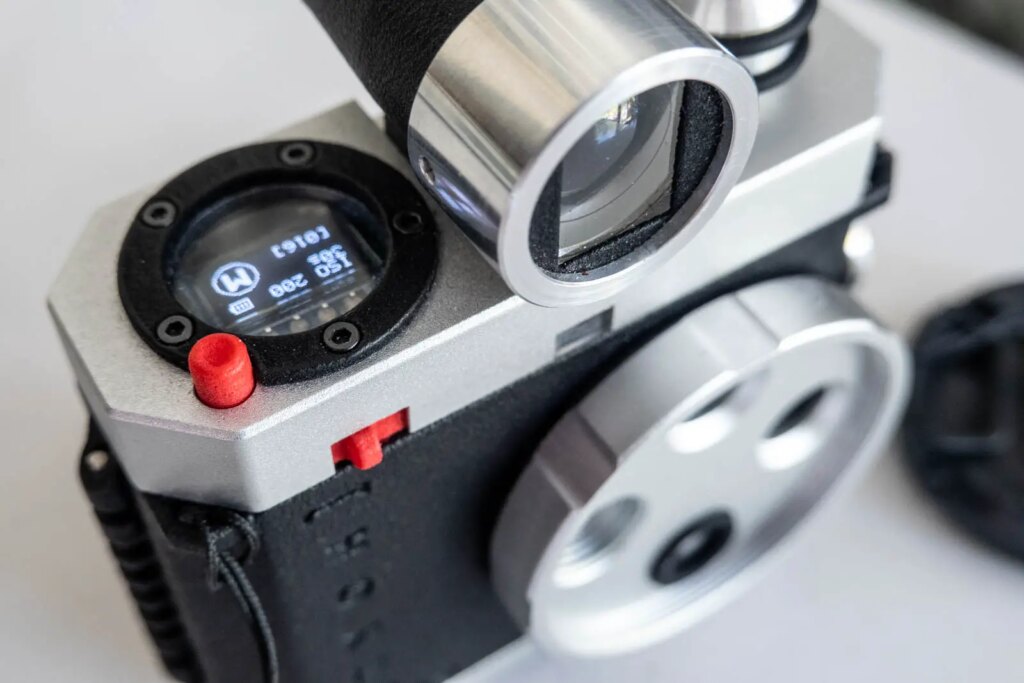
Taking photos
Possibly the first thing I noticed when taking photos with the Alfie Tych is that it is very quiet. The electronically controlled shutter makes the tiniest little click when the little red shutter button is pressed. It’s so quiet that sometimes it makes you wonder if a shot was taken at all. This is, of course, where the electronic shutter counted comes in handy.
Aside from the noise it makes, it also becomes quickly apparent that the Alfie Tych is a really very simple camera to use. There’s a little red on/off switch on the front of the camera – switch it and you’re ready to go after about 1 second of start-up time. The little screen on the top shows you what exposure mode you’re in and the settings you’re going to fire with. There’s a single control dial on the back that jogs left and right for changing settings. Pressing the dial in also acts as a button that allows you to change and select modes and settings as well as entering the menu.
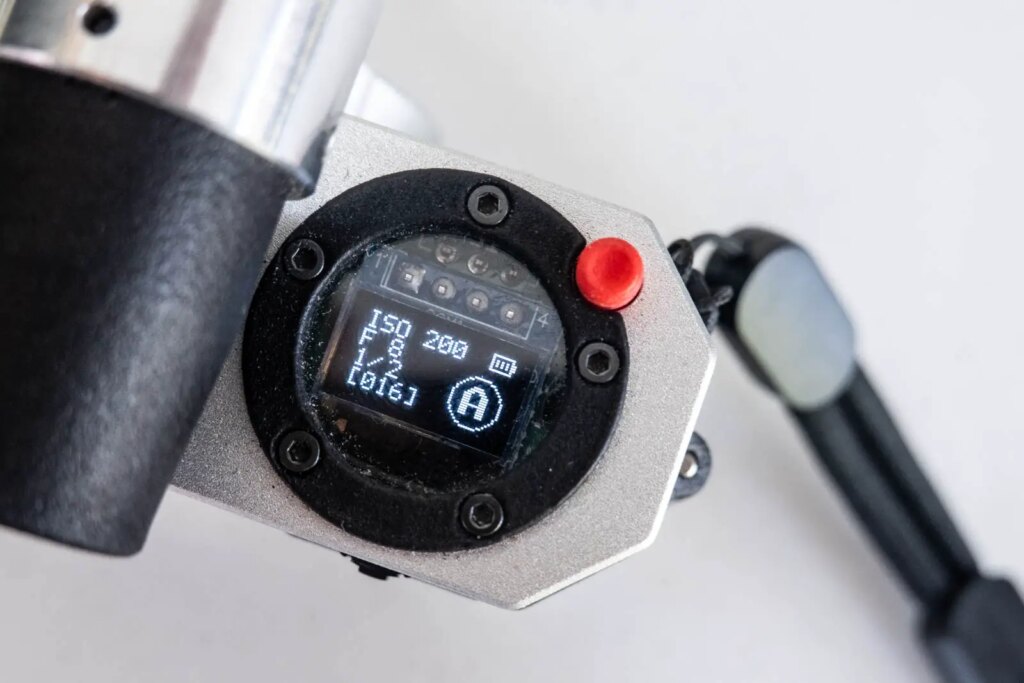
When in the automatic exposure mode, the aperture can be switched to match the chosen lens. f/8 for the optics, f/56 for the Zone Sieve and f/125 for the pinhole lens. The meter then automatically chooses the relevant shutter speed. There’s also a manual mode which allows the shutter speed to be selected manually, though it’s worth noting that when in manual mode, the Tych doesn’t give any exposure information so guesswork, an external meter or, process of switching between manual and auto is needed to obtain correct exposure information.
I should say for complete transparency, as mentioned at the beginning of the article, the autoexposure is a little wayward on the prototype I have here. I don’t see this as being anything to worrying about though as Dave warned me of this when he handed it to me, saying it was an easy fix he just hadn’t got around to in the rush before launch and trying to get a few cameras ready for the show.
Loading/unloading is easy enough too. The little wheel on the side unscrews to allow the back to be opened. Once open the film loads like into any 35mm camera really – Dave just warned me to make sure the sprocket holes were aligned with the sprocket. The film advances with the wheel in the bottom of the camera. There’s no focusing, of course, so no half-press shutter. Just click it to fire (and check the shutter counter if you didn’t hear the shutter go) and wind on until the white dot appears in the window on the back of the camera. At the end of the roll, you just wind the film back with the metal and rubber knob on the shoulder of the camera.
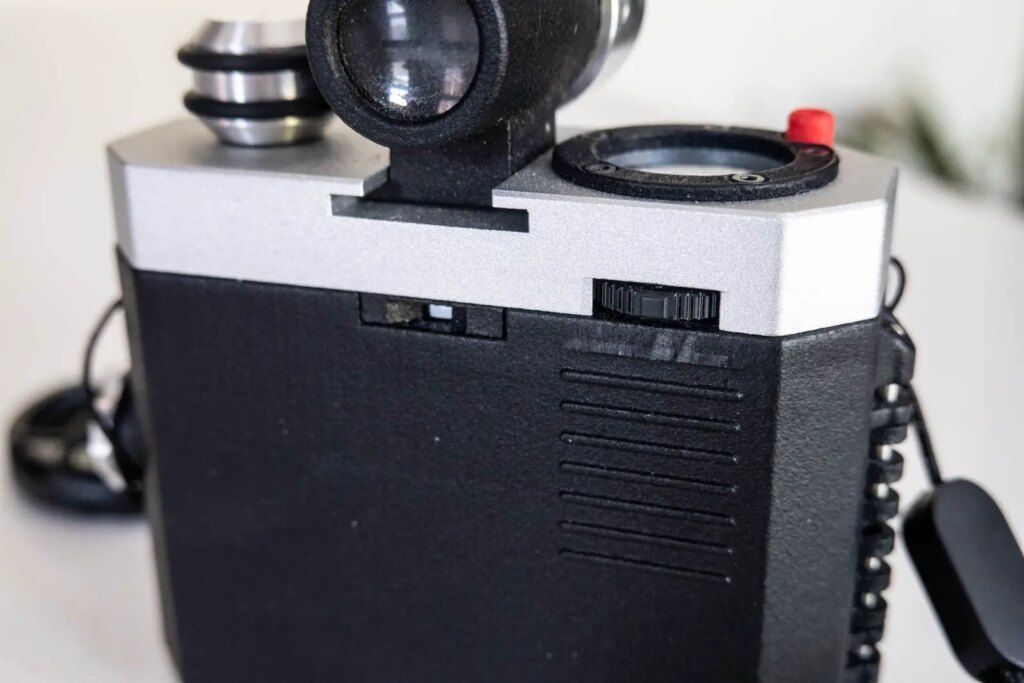
The Photos
As you will see in the images, the copy of the camera I have here has a light leak. As I said at the beginning of this article, this is an issue that’s limited to the prototype I have here. Dave already has a fix. Other than that, these should give you an idea of what to expect in terms of picture quality from the disposable camera lens and pinhole.
As you might expect, the images definitely have the character that I would associate with a simple plastic disposable camera lens. There’s a little bit of softness and a glow to high contrast areas, it’s softer toward the edges, but the overall look of the images definitely has that lo-fi aesthetic that continues to increase in popularity with those who have turned to film photography to seek a departure from the clinical look they are more used to from their smartphones and digital cameras.
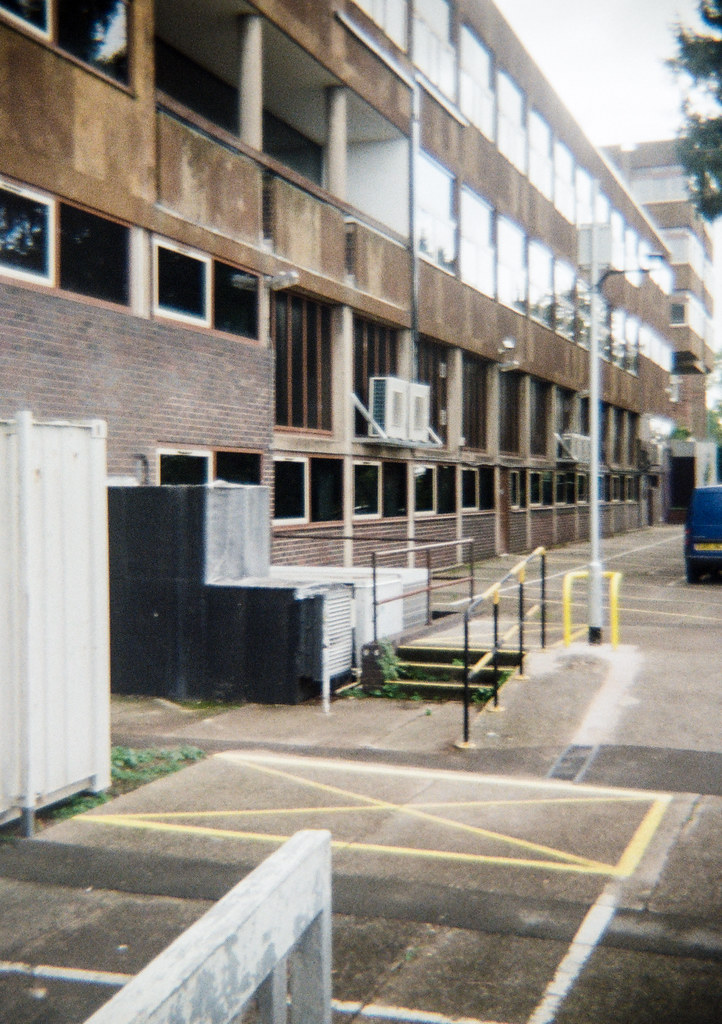
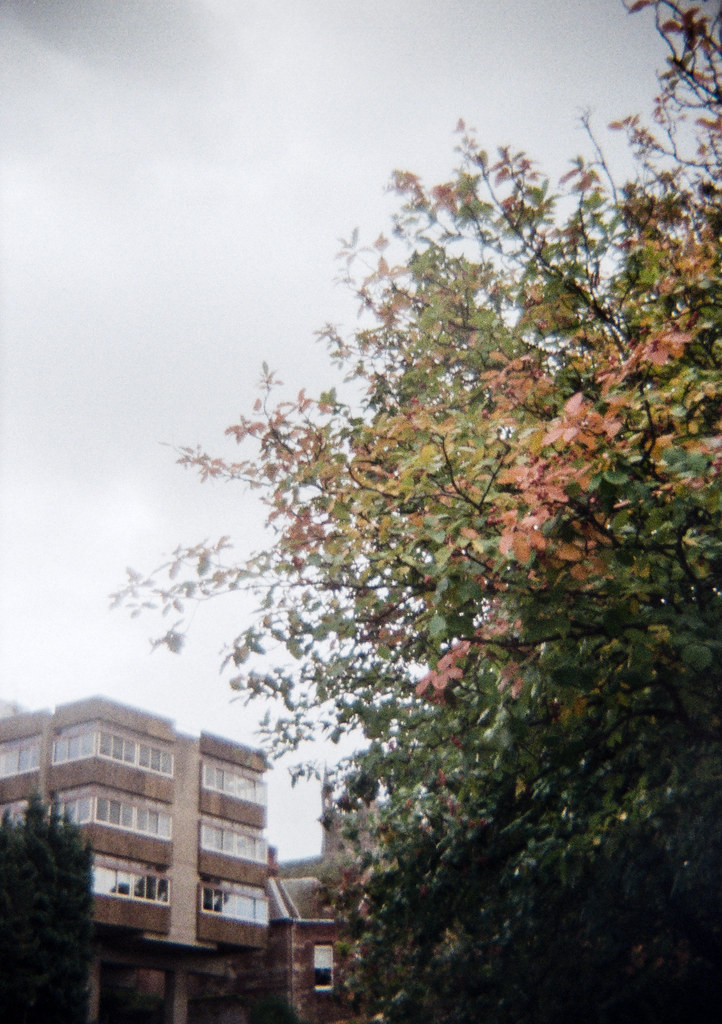
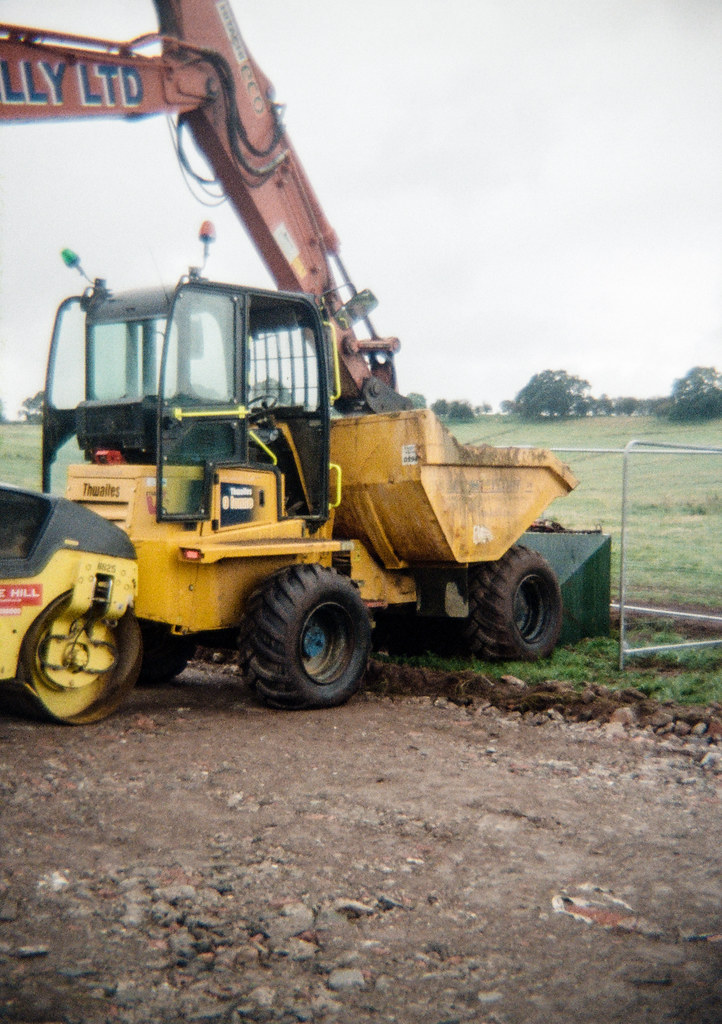
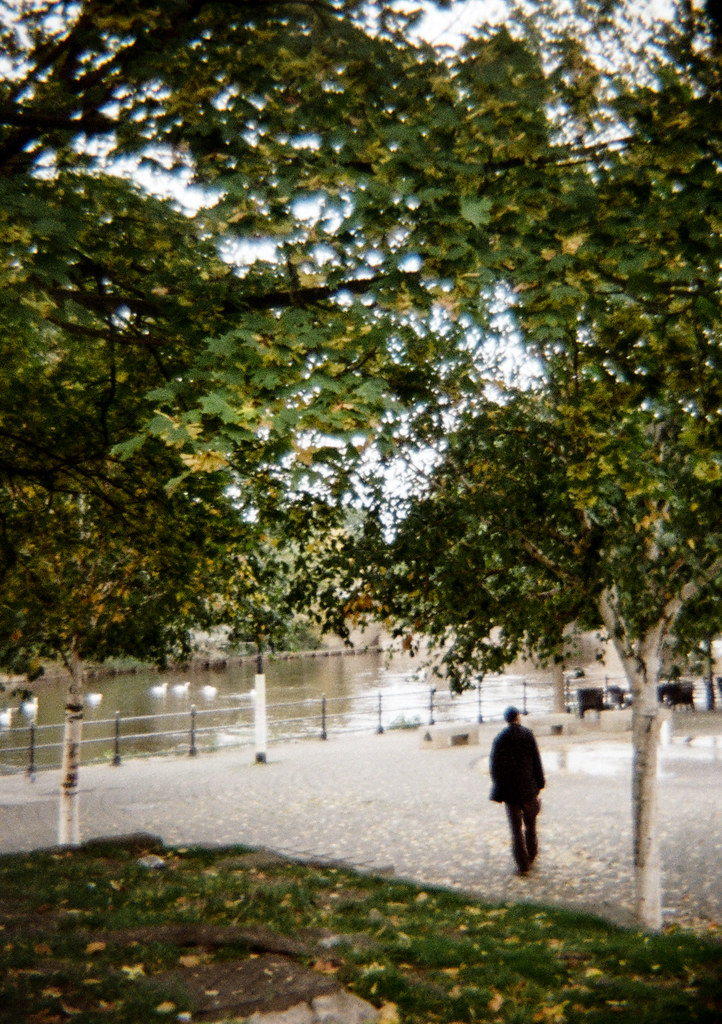
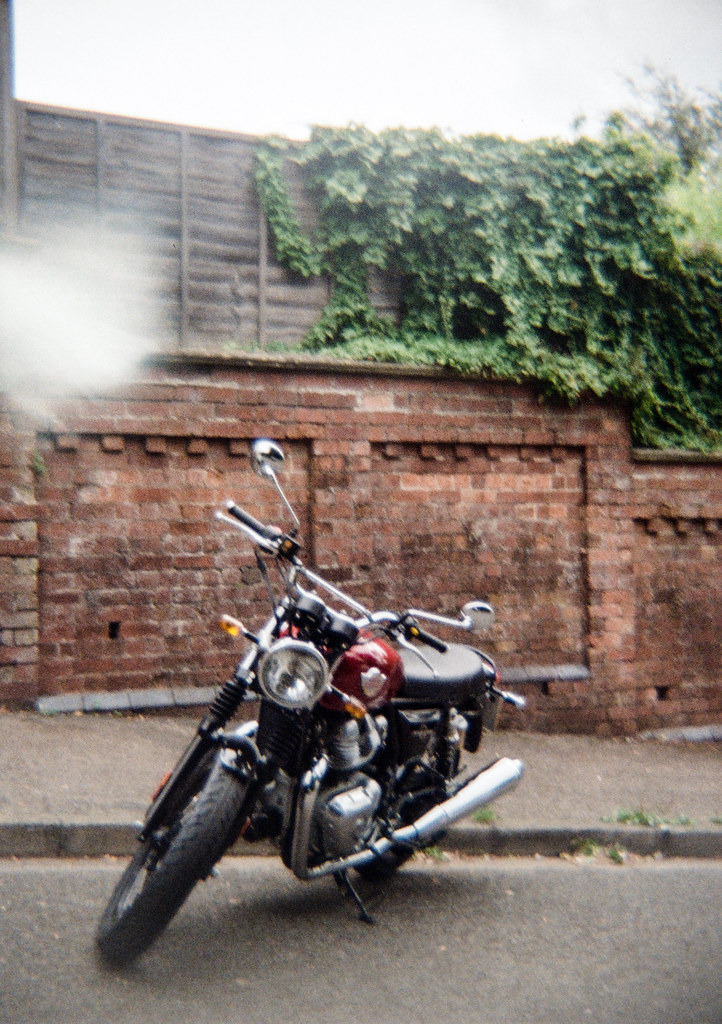
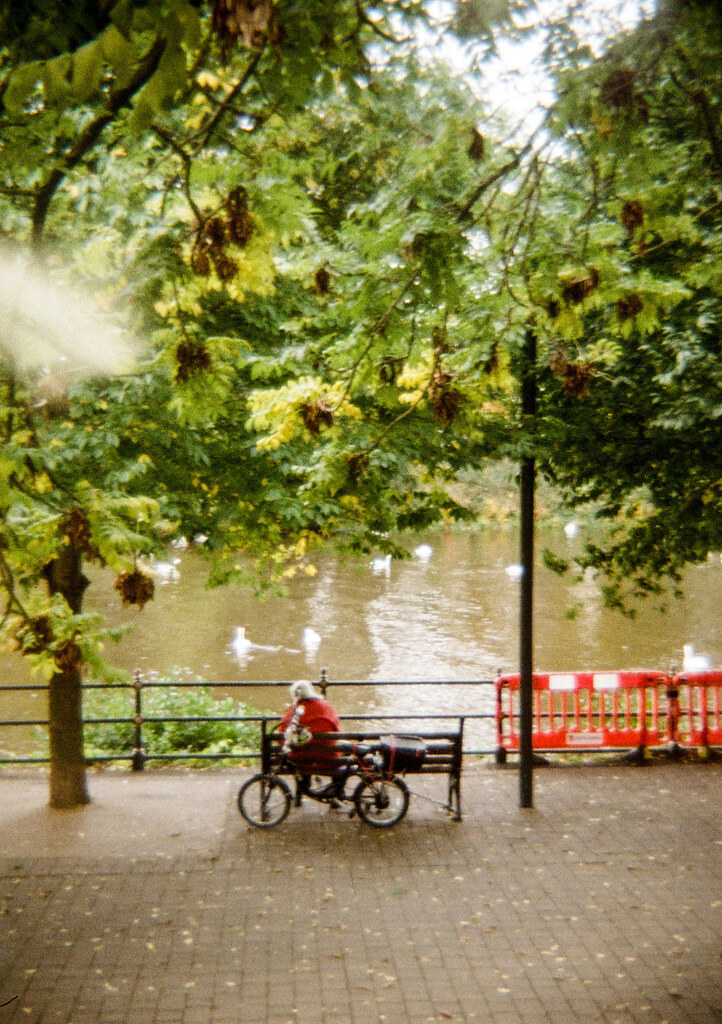
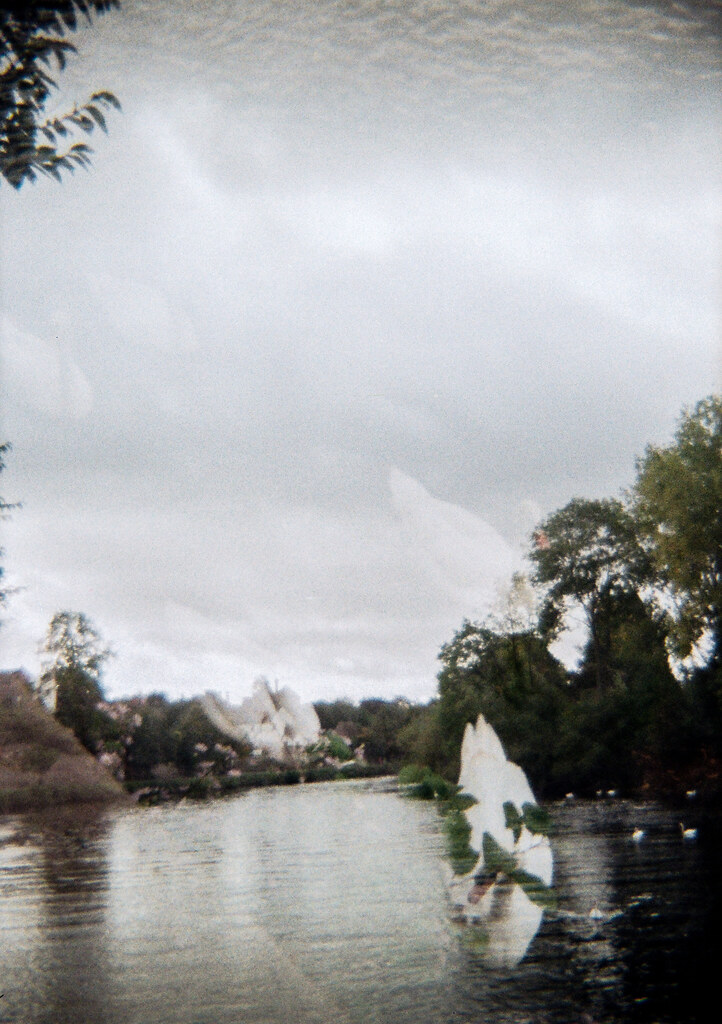
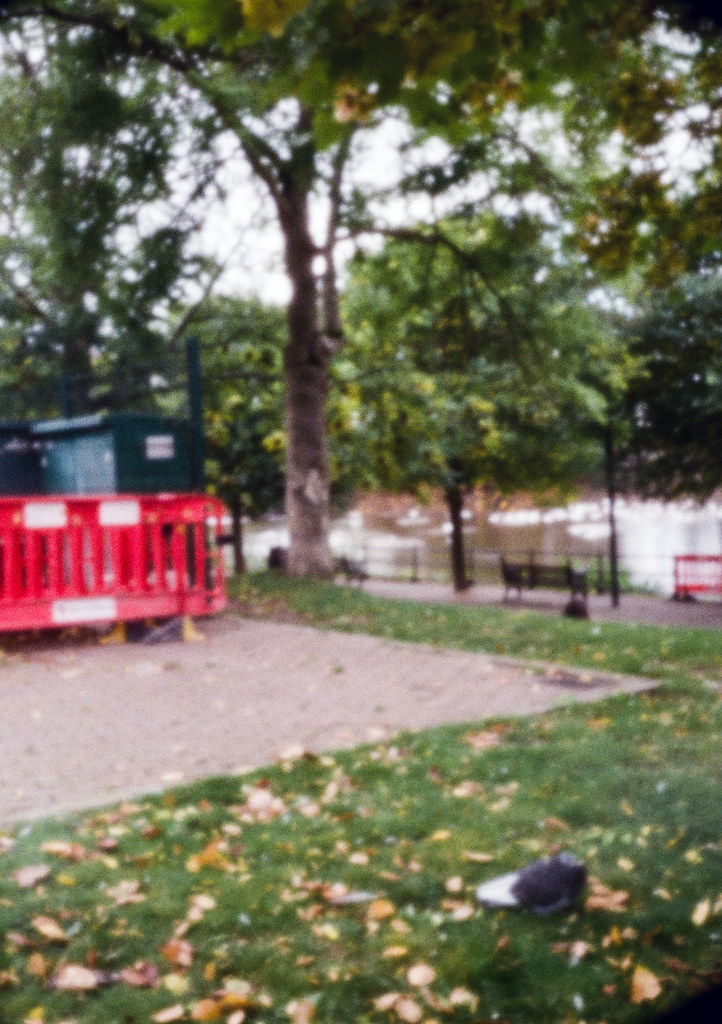
The 33mm Lens
Before I conclude, I just wanted to add a paragraph about the 33mm lens. What with me being involved in the manufacture of lenses myself, and having worked with Jason Lane, the lens designer, myself before, I was interested to learn a little more. I asked Dave for more detail and this is what he said – words, I believe:
The Alfie TYCH+ Comes with a premium 33mm F8 glass lens. Designed around a classic Aplanat or Rapid Rectilinear design with 4 Elements in 2 groups. A modern higher index, lower dispersion glass replaces the two outer glass-types, and helps to correct over the wider spectral range (400-700nm) required for modern photography. A single-layer anti-reflection coating on all optical surfaces provides a balance of high transmission with a classic ever-so-slightly warm color rendering., straight from Jason himself.
In short, this lens will offer the user a much higher-quality/sharper option for those looking to use the Alfie Tych Plus for landscape type snaps.
He also included this optical diagram:
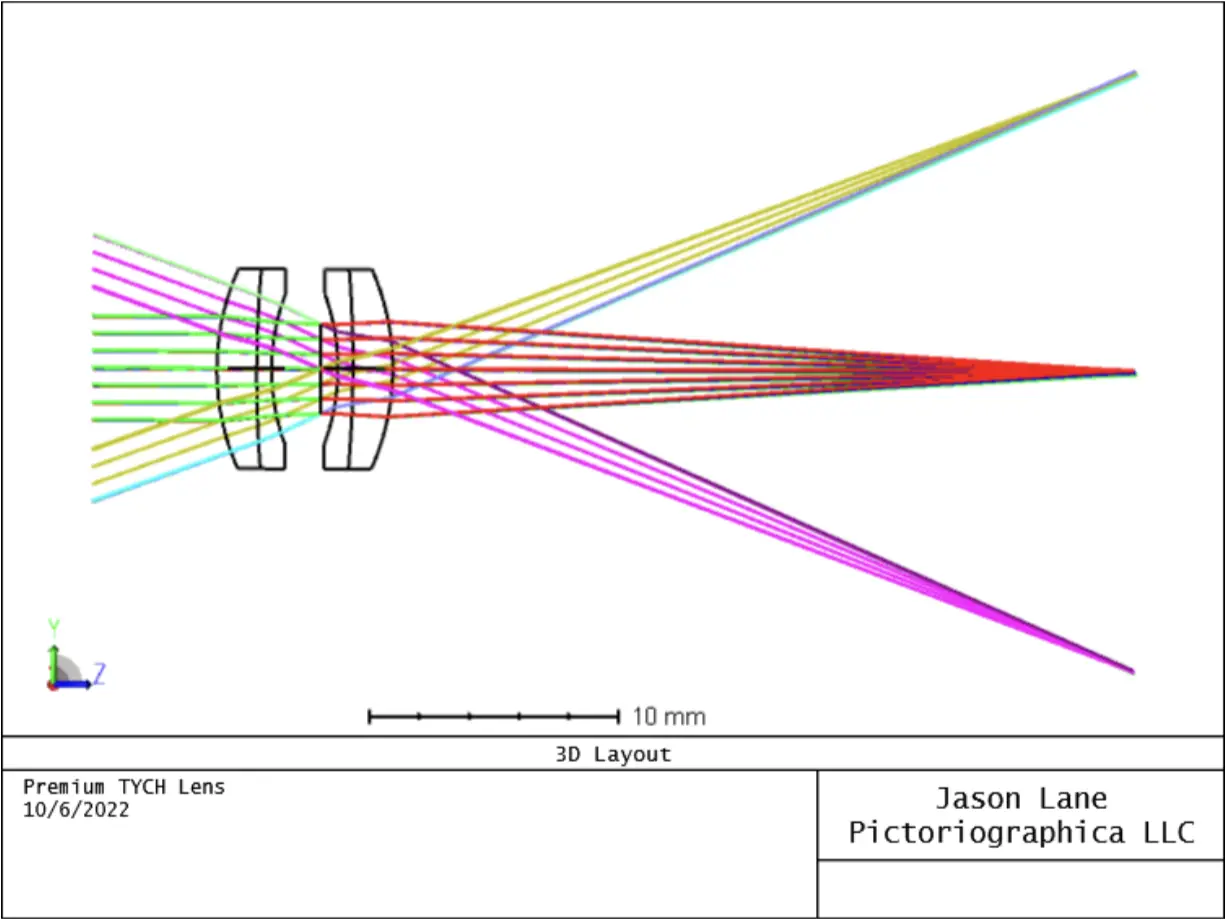
Final thoughts
The Alfie Tych would suit me great for sunny day snaps on a day out with the kids – I’d use it happily in the same way I shot the Pentax 110 auto over the Summer. Add to that the ability to play with it with the manual controls, the filter thread and pinhole option, and actually, it offers a great deal of opportunity for enjoyable photography for anyone. With that said, I do think there is slightly different targeting when comparing the basic Tych and Tych Plus models. The Tych (non-plus model) is probably more aimed at photographers who are less concerned by things like high optical quality, and more interested in leaning into the sort of image quality achieved with disposable, reusable and pinhole cameras. The difference here is a camera that offers a much more significant amount of creative control and therefore offers a platform for more and varied experimentation in an even smaller package than a dis/reusable.
The Tych Plus with its high-quality lens (and slightly more premium price) opens up the potential userbase to folks who also want a highly pocketable camera from good quality landscapes. Of course, only time will tell on how good the lens is, but with James Lane behind the design, I suspect it will be excellent.
As I hope I’ve made clear, I’m really quite impressed with the Alfie Tych! What Dave has managed to achieve as a first camera is nothing short of remarkable. If you’re into the more experimental side of film photography, like your cameras really very small, or just want to support a burgeoning (and clearly very talented) one-man-band camera manufacturer, then get yourself over to Kickstarter and join me in backing the Alfie Tych! I’m very much looking forward to trying my production Tych sometime (hopefully) early next year!
You can also find out more about the camera on the Alfie website here.
Share this post:
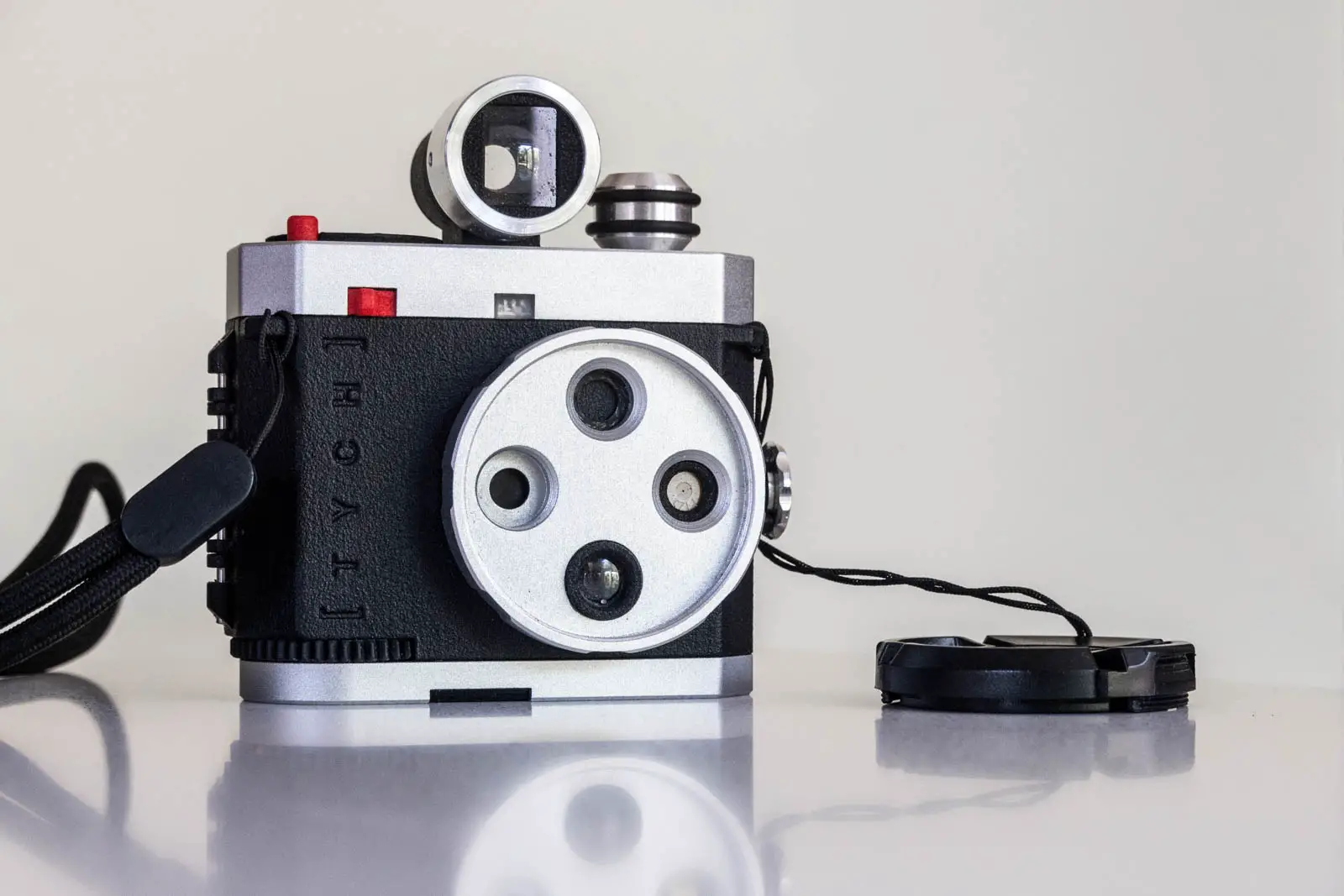
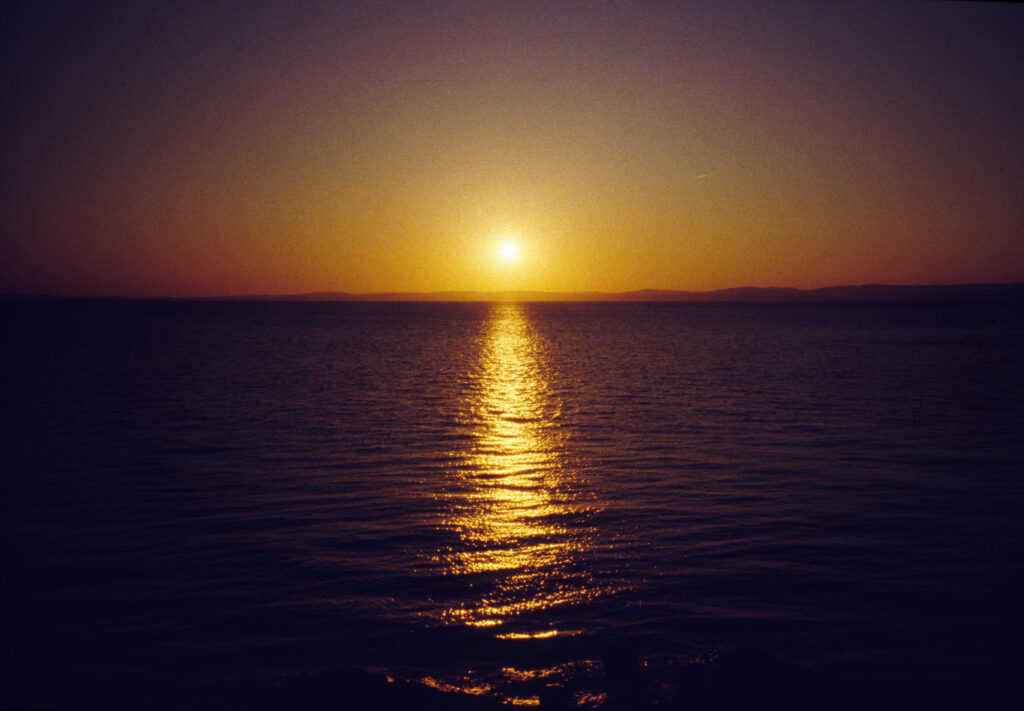
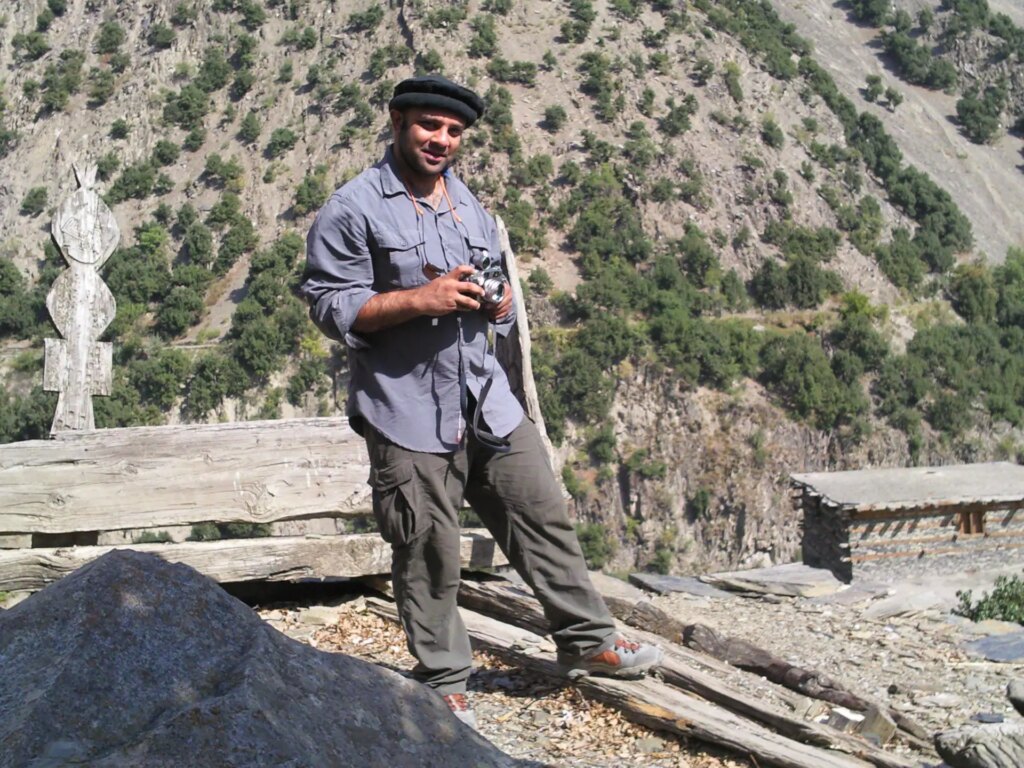
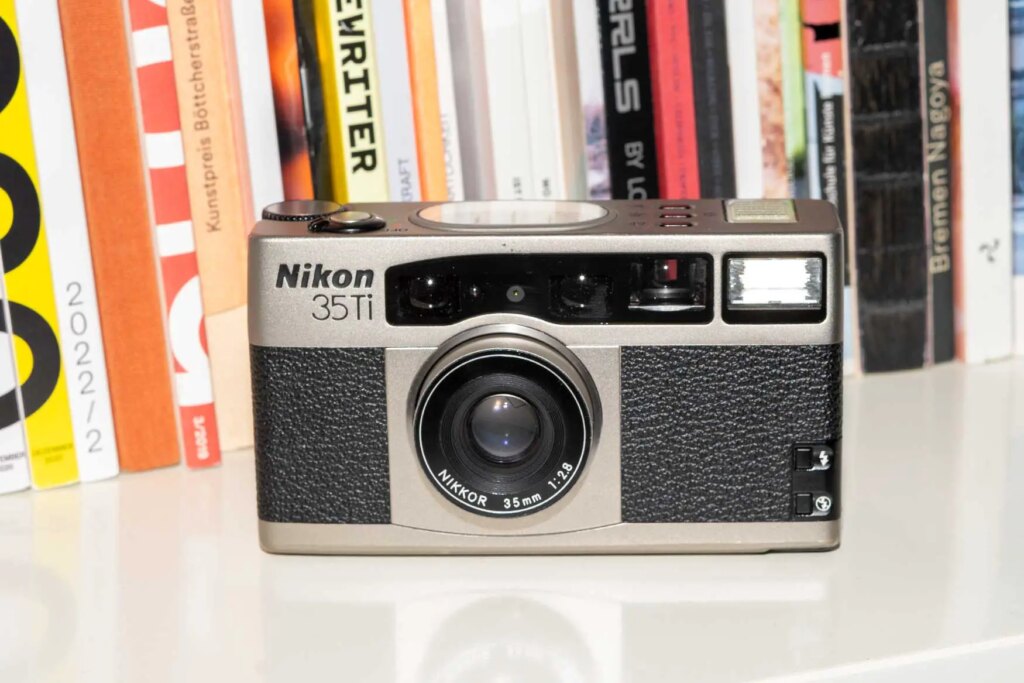
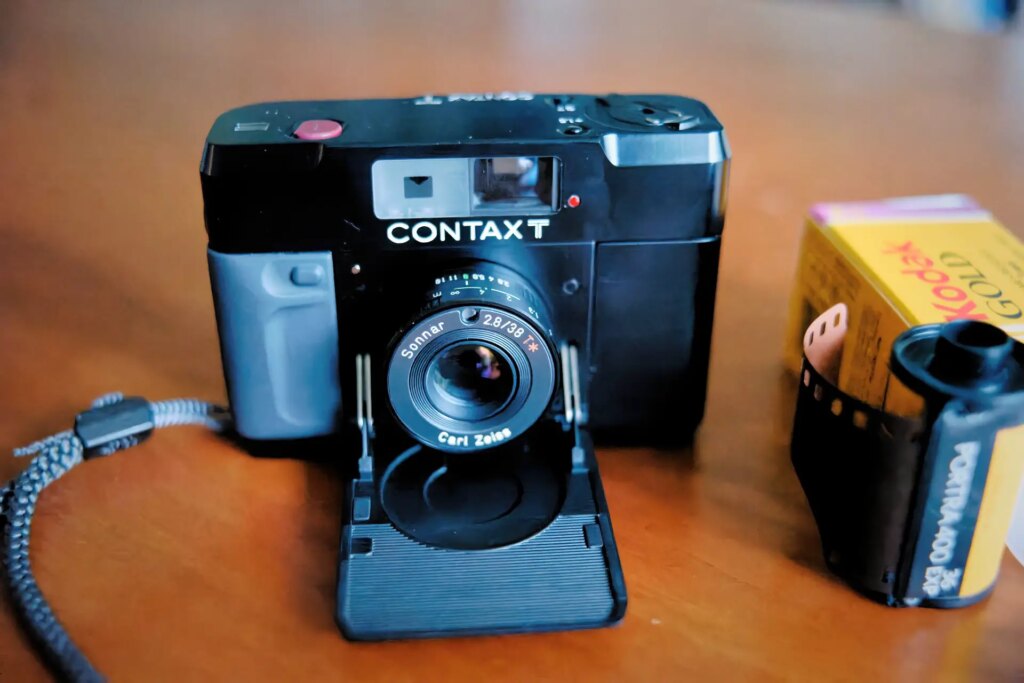




Comments
Dave Faulkner on Alfie Tych Preview – An Eccentric Camera that Fits in the Palm of Your Hand
Comment posted: 13/10/2022
http://www.alfiecameras.com/example-images
Rajat Srivastava on Alfie Tych Preview – An Eccentric Camera that Fits in the Palm of Your Hand
Comment posted: 14/10/2022
Alexander Seidler on Alfie Tych Preview – An Eccentric Camera that Fits in the Palm of Your Hand
Comment posted: 16/10/2022
For my opinion mechanics and electronics: counter, lens selection, shutter enables film advance MUST be connected.